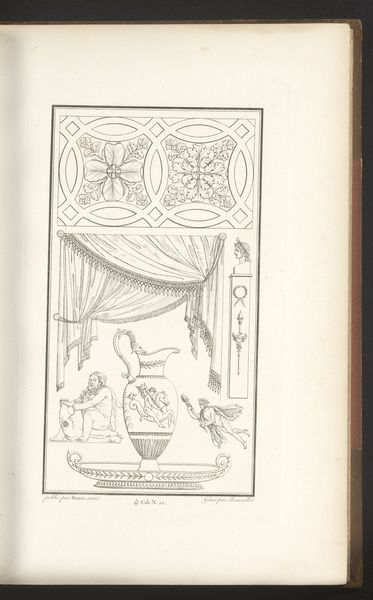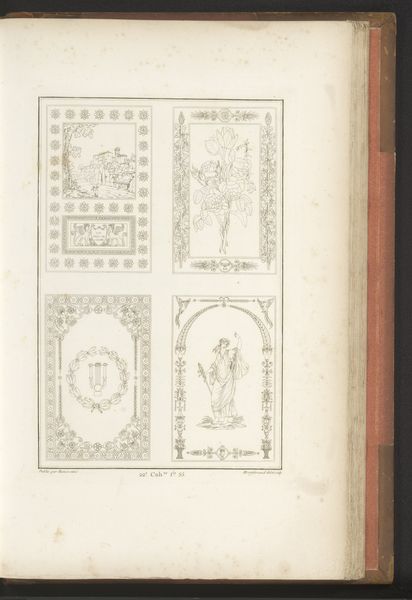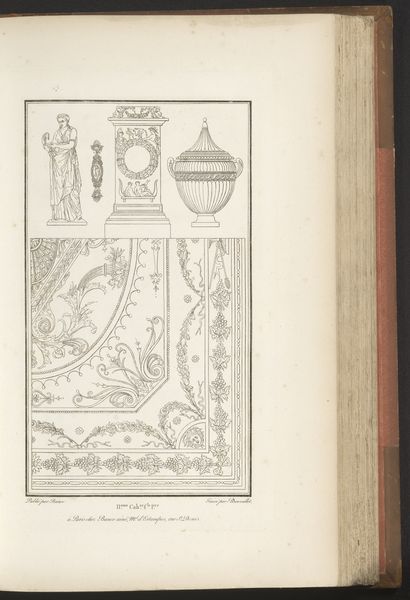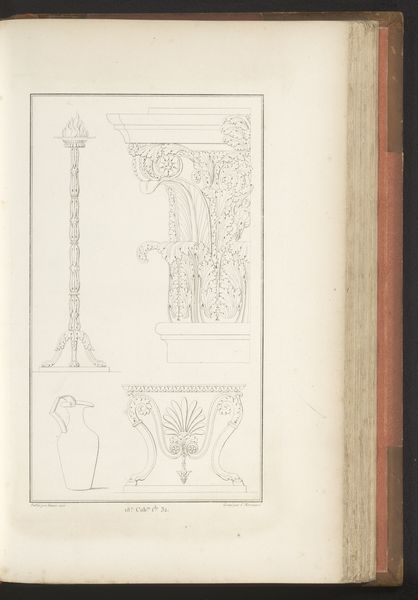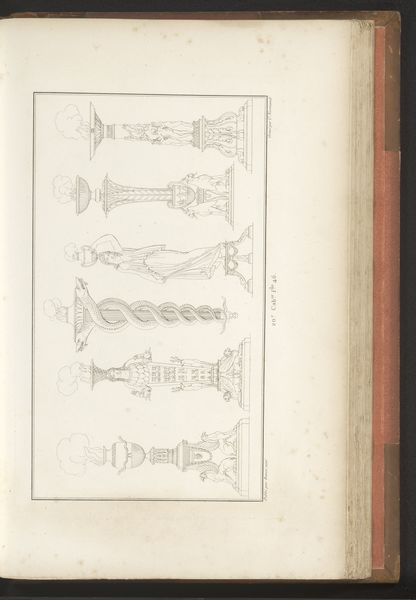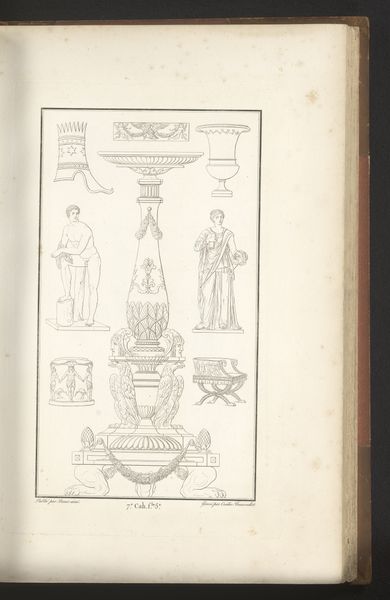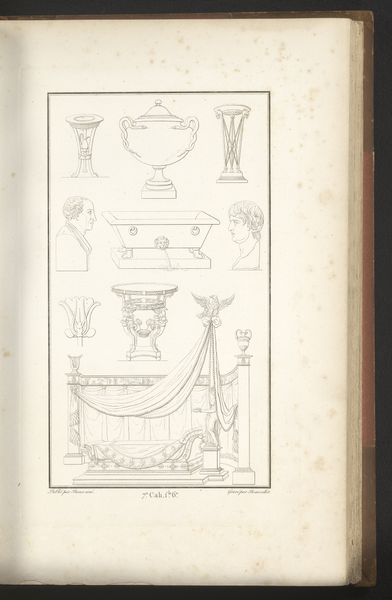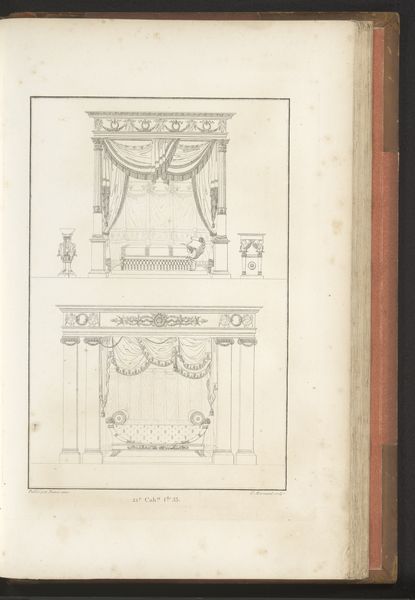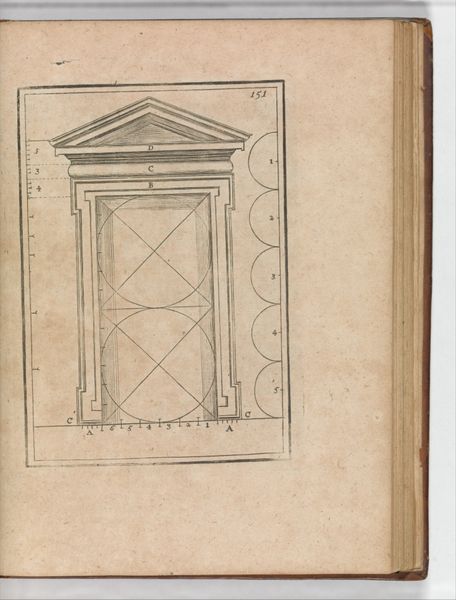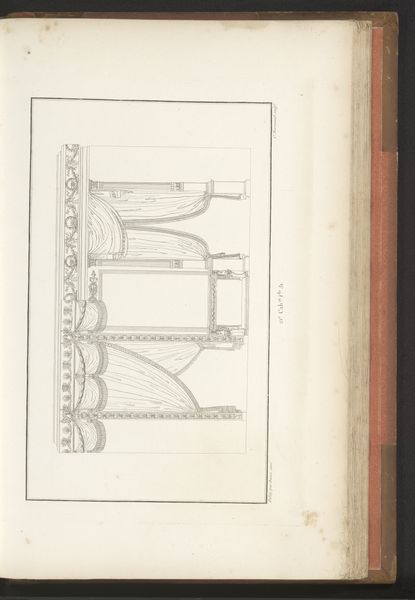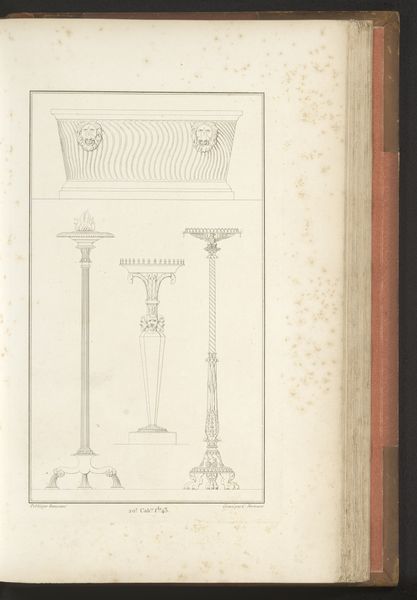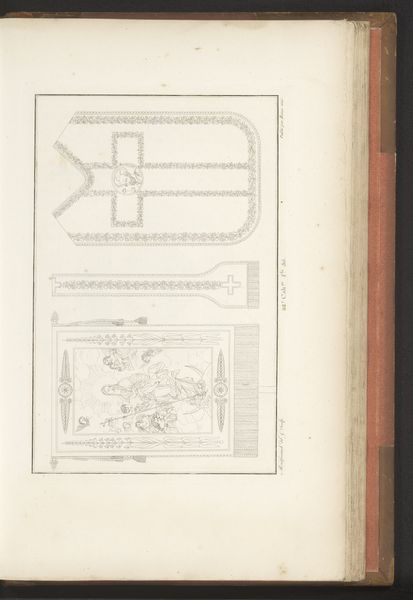
drawing, paper, ink, architecture
#
drawing
#
paper
#
form
#
ink
#
geometric
#
ancient-mediterranean
#
line
#
architecture
Dimensions: height mm, width mm
Copyright: Rijks Museum: Open Domain
Editor: This is “Zuil en figuren,” or “Column and Figures,” an ink drawing on paper from 1820 by Charles Pierre Joseph Normand. The symmetry is really striking; everything feels so carefully balanced and ordered. What do you see in this piece? Curator: I see more than just balanced order; I see a carefully constructed ideology. Normand was deeply influenced by antiquity, and this drawing engages with the legacy of ancient forms. Consider the period – the early 19th century was a time of intense colonial expansion and the “discovery” of ancient civilizations. How might architectural drawings like these contribute to a sense of European cultural superiority and legitimize colonial power? Editor: So, the drawing isn't just a neutral record; it's actively participating in a power dynamic? Curator: Precisely. Look at the idealized, almost ethereal figures flanking the column and supporting the basin. They present a specific, and perhaps romanticized, view of antiquity – one that conveniently aligns with European imperial ambitions. It almost feels like a projection or an appropriation, doesn’t it? The medium itself – a precisely rendered drawing – also speaks to a desire for control and understanding, a desire to catalog and thus, perhaps, to dominate. What about the geometry speaks to you? Editor: I hadn't considered that. The clean lines definitely feel like a way of imposing order. Seeing it that way makes me wonder about the intent behind idealizing ancient forms. It feels less about reverence and more about appropriation now. Curator: It's a potent reminder that even seemingly straightforward depictions of the past can be deeply implicated in contemporary politics. Examining art through this lens lets us confront uncomfortable truths about cultural power. Editor: Absolutely. I'll definitely keep an eye out for the potential intersectional and political messaging in art. This dialogue makes a big impact on my view of older art, such as architecture. Curator: Agreed! I've enjoyed our quick yet thought-provoking jaunt into the political power imbued in this piece. It proves even technical illustrations from the past hold complex resonance today.
Comments
No comments
Be the first to comment and join the conversation on the ultimate creative platform.
